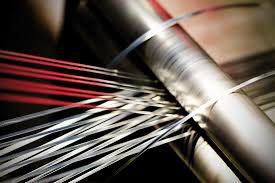
Explained: Nickel Foil and Its Applications
Nickel foil, a thin sheet of nickel, is a highly versatile material widely used in industries ranging from electronics to energy storage. Known for its unique combination of physical and chemical properties, nickel foil plays a critical role in various advanced technologies. This article explores its characteristics, manufacturing processes, and applications.
Properties of Nickel Foil
- High Thermal and Electrical Conductivity:
- Nickel foil exhibits excellent thermal and electrical conductivity, making it ideal for heat and current transfer applications.
- Corrosion Resistance:
- Offers remarkable resistance to oxidation and corrosion, ensuring durability in harsh environments.
- Ductility:
- Its malleability allows for easy fabrication into different shapes and forms.
- Magnetic Properties:
- Nickel is ferromagnetic, enabling its use in magnetic shielding and other electromagnetic applications.
- Chemical Stability:
- Resistant to many chemicals, ensuring stability in industrial and laboratory settings.
Manufacturing of Nickel Foil
Nickel foil is typically produced through the following methods:
- Cold Rolling:
- Nickel sheets are rolled into thin foils under high pressure, providing precise control over thickness.
- Electrodeposition:
- Nickel is deposited onto a substrate through electroplating, allowing for ultra-thin foil production.
- Chemical Vapor Deposition (CVD):
- Produces high-purity nickel foils by depositing nickel atoms onto a surface in a controlled environment.
- Powder Metallurgy:
- Uses nickel powder to form foils through compaction and sintering.
Applications of Nickel Foil
- Electronics:
- Used in batteries, capacitors, and electronic circuits due to its excellent conductivity and durability.
- Energy Storage:
- Nickel foil serves as a critical component in lithium-ion and nickel-metal hydride batteries.
- Catalysis:
- Acts as a catalyst or catalyst support in chemical reactions, including hydrogen production and fuel cells.
- Aerospace and Automotive:
- Integrated into lightweight and high-performance components for improved efficiency.
- Magnetic Shielding:
- Used to protect sensitive electronics from electromagnetic interference (EMI).
- Fuel Cells:
- Nickel foil enhances the performance and durability of solid oxide fuel cells (SOFCs).
- Medical Devices:
- Incorporated into implantable devices and surgical tools due to its biocompatibility and resistance to corrosion.
- Packaging:
- Used in specialized packaging solutions requiring durability and resistance to environmental factors.
Advantages of Nickel Foil
- Versatility:
- Applicable in multiple industries due to its unique combination of properties.
- Durability:
- Resistant to wear, corrosion, and extreme temperatures, ensuring a long lifespan.
- Customizability:
- Available in various thicknesses and dimensions, meeting specific application requirements.
- Sustainability:
- Recyclable and environmentally friendly, supporting sustainable manufacturing practices.
Challenges in Using Nickel Foil
- Cost:
- High production costs can limit its use in cost-sensitive applications.
- Processing:
- Handling ultra-thin foils requires precision to avoid damage during fabrication.
- Availability:
- Dependence on nickel mining and refining can lead to supply chain vulnerabilities.
Future Prospects
- Advanced Energy Applications:
- Expanding use in next-generation batteries and renewable energy technologies.
- Nanotechnology:
- Integration into nanostructures for enhanced performance in electronics and catalysis.
- 3D Printing:
- Potential for use as a base material in additive manufacturing processes.
- Eco-Friendly Manufacturing:
- Research into sustainable production methods to reduce environmental impact.
Conclusion
Nickel foil is a critical material driving innovation across various industries. Its unique properties and wide-ranging applications ensure its continued relevance in advancing technologies. As research progresses, nickel foil will likely play an even greater role in energy, electronics, and sustainability, solidifying its place as a cornerstone of modern material science.
